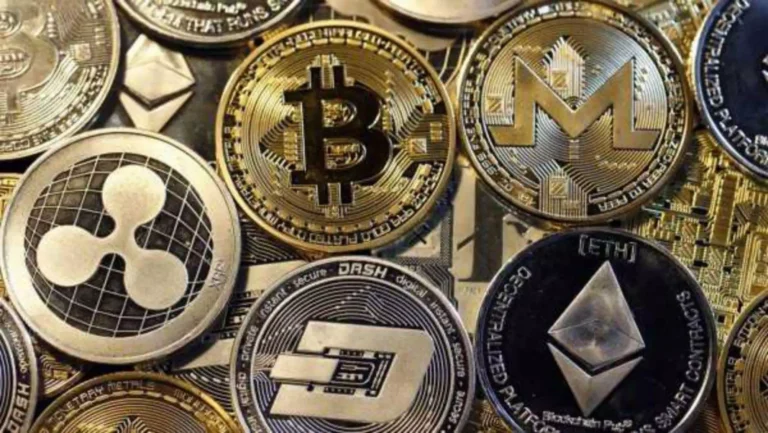So I was thinking about this whole multi-chain wallet craze lately. Seriously, it’s wild how we’ve jumped from “one chain fits all” to juggling a dozen blockchains like a circus act. At first, I figured, okay, it’s just convenience, right? But then I realized there’s a lot more going on under the hood—especially when you mix in cross-chain swaps and derivatives. Wow! That’s some next-level stuff.
If you’ve ever tried moving assets between chains, you know the pain—waiting for confirmations, dealing with clunky bridges, sometimes paying crazy fees. My instinct said there had to be a smoother way. That’s where multi-chain wallets come in, kind of like your crypto Swiss Army knife, allowing you to manage assets across different ecosystems seamlessly. But here’s the kicker: they’re not just wallets anymore.
Initially, I thought, “Okay, it’s a wallet that talks to different chains,” but actually, wait—let me rephrase that. It’s more like a unified platform where you can swap tokens across chains instantly and even dive into derivatives trading without hopping between a dozen apps. Pretty nuts, huh? This is reshaping how DeFi users experience crypto—especially for those who want to stay nimble.
Now, I’m not 100% sure how secure all these multi-chain setups are, but from what I’ve seen, wallets like bybit wallet are making solid strides. They meld exchange-grade features with wallet security, which is a rare combo. Something felt off about earlier multi-chain wallets—too many compromises on security or usability—but these newer players seem to get it right.
Here’s the thing. Managing assets across Ethereum, Binance Smart Chain, Solana, and others used to feel like juggling flaming torches. Cross-chain swaps were often slow, expensive, and risky due to bridge hacks. But now, some wallets integrate native cross-chain protocols that cut out the middleman, reducing fees and speeding up trades. It’s like moving your money between banks without waiting days or paying a fortune.
Check this out—
That interface? That’s from a multi-chain wallet I’ve been testing. Notice how it shows balances on multiple chains and lets you swap tokens without leaving the app. That’s a game-changer for DeFi users who want to stay liquid and responsive to market moves.
But wait, the real magic happens when you consider derivatives trading on these platforms. Yeah, derivatives—futures, options, perpetual swaps—stuff that was traditionally reserved for centralized exchanges. Incorporating them directly into a multi-chain wallet means you can hedge risk or speculate without moving funds out to another service. Sounds too good to be true? Well, it’s not perfect yet. There are trade-offs in terms of interface complexity and sometimes liquidity depth.
On one hand, this integration empowers users with more control and speed. Though actually, it raises questions about regulatory oversight and user education. Derivatives can be risky—like, very very risky—and not everyone knows what they’re getting into. I’ll be honest, this part bugs me a bit. We’re racing ahead technologically, but are people ready for this level of access?
Still, I can’t deny the allure. Imagine seamlessly swapping tokens across chains and then jumping into a futures contract all within your wallet. No multiple logins, no switching apps, no waiting around. For active traders and DeFi enthusiasts, this is a dream. For casual users, it might be overwhelming—but hey, that’s the evolution curve.
Why Multi-Chain Wallets with Exchange Features Matter
Okay, so check this out—traditional wallets held your keys and that was that. You’d have to trust external exchanges or decentralized platforms for swaps and trading. But multi-chain wallets with built-in exchange features combine custody with trading fluidity. That means your assets never really leave your control, reducing exposure to hacks or exit scams.
Plus, the user experience improves dramatically. Instead of navigating a maze of interfaces, you get a single unified dashboard. This is crucial because, honestly, crypto can be intimidating as hell. Simplifying the process without sacrificing functionality is very very important if mass adoption is ever gonna happen.
Now, I’m biased, but the bybit wallet nails this balance. It’s got multi-chain support, cross-chain swaps, and even derivatives trading wrapped up in a neat, user-friendly package. That’s not easy. Many wallets claim to support these features but falter in execution—either too clunky or too centralized.
Here’s the catch though: integrating derivatives trading means you need robust backend infrastructure to handle margin, leverage, and liquidation. Doing this securely on-chain across multiple blockchains is an ongoing challenge. Some solutions lean on off-chain order books or hybrid models, which can dilute decentralization but improve performance. It’s a trade-off the industry is still grappling with.
Another thing—liquidity. Cross-chain swaps rely heavily on liquidity pools or bridges that can sometimes dry up or become congested. This can lead to slippage or delays. Some wallets mitigate this by aggregating liquidity from multiple sources, but it’s a bit like trying to coordinate a dozen moving parts simultaneously. Not always smooth, but getting better.
And speaking of improvements, the security model has to evolve too. Multi-chain wallets often use multi-signature or hardware wallet integrations for added safety. But when you throw derivatives and leverage into the mix, the risk profile changes. Users need to be extra cautious and ideally have education baked into the platform.
By the way, if you’re considering diving into this space, I’d suggest starting small and exploring wallets with strong reputations and transparent security audits. The bybit wallet is a good example where they combine exchange and wallet features carefully without over-promising.
Honestly, I’m fascinated by how this tech will mature. Cross-chain interoperability has been the holy grail for a while, and now it’s happening in wallets, not just exchanges. It feels like we’re finally getting closer to a truly open financial ecosystem where your assets and trading strategies aren’t locked into a single chain or platform.
Of course, there’s still a lot to figure out. User experience, security, regulatory clarity, liquidity—these factors will shape which wallets rise to prominence. But from where I’m sitting, multi-chain wallets with integrated cross-chain swaps and derivatives trading are a glimpse into the future of decentralized finance.
And, oh, one last thing—keep an eye on how these wallets handle gas fees across chains. Some networks have high fees that can kill small trades, so efficient batching and fee optimization are key. If a wallet nails this, it could be a winner for everyday users.
So yeah, multi-chain wallets are not just wallets anymore—they’re evolving into powerful, all-in-one financial hubs. It’s a wild ride, and I’m here for it.
FAQs about Multi-Chain Wallets and Cross-Chain Trading
What is a multi-chain wallet?
A multi-chain wallet allows you to manage crypto assets across multiple blockchain networks from one interface, without needing separate wallets for each chain.
How do cross-chain swaps work in these wallets?
Cross-chain swaps enable you to exchange tokens from one blockchain to another directly within the wallet, often using protocols that bridge liquidity pools or atomic swap technologies.
Can I trade derivatives directly from a multi-chain wallet?
Yes, some advanced multi-chain wallets integrate derivatives trading features like futures and options, letting you trade without moving funds to external exchanges.
Is it safe to use wallets with integrated exchange and derivatives features?
While these wallets improve convenience, they also come with increased complexity and risk. Always use wallets with strong security track records, and start small until you’re comfortable.
Which multi-chain wallet do you recommend?
Based on my experience, the bybit wallet offers a solid balance of multi-chain support, cross-chain swaps, and derivatives trading with good security and usability.






